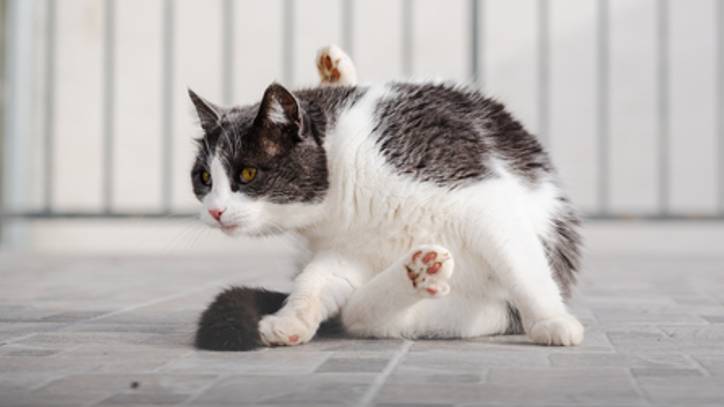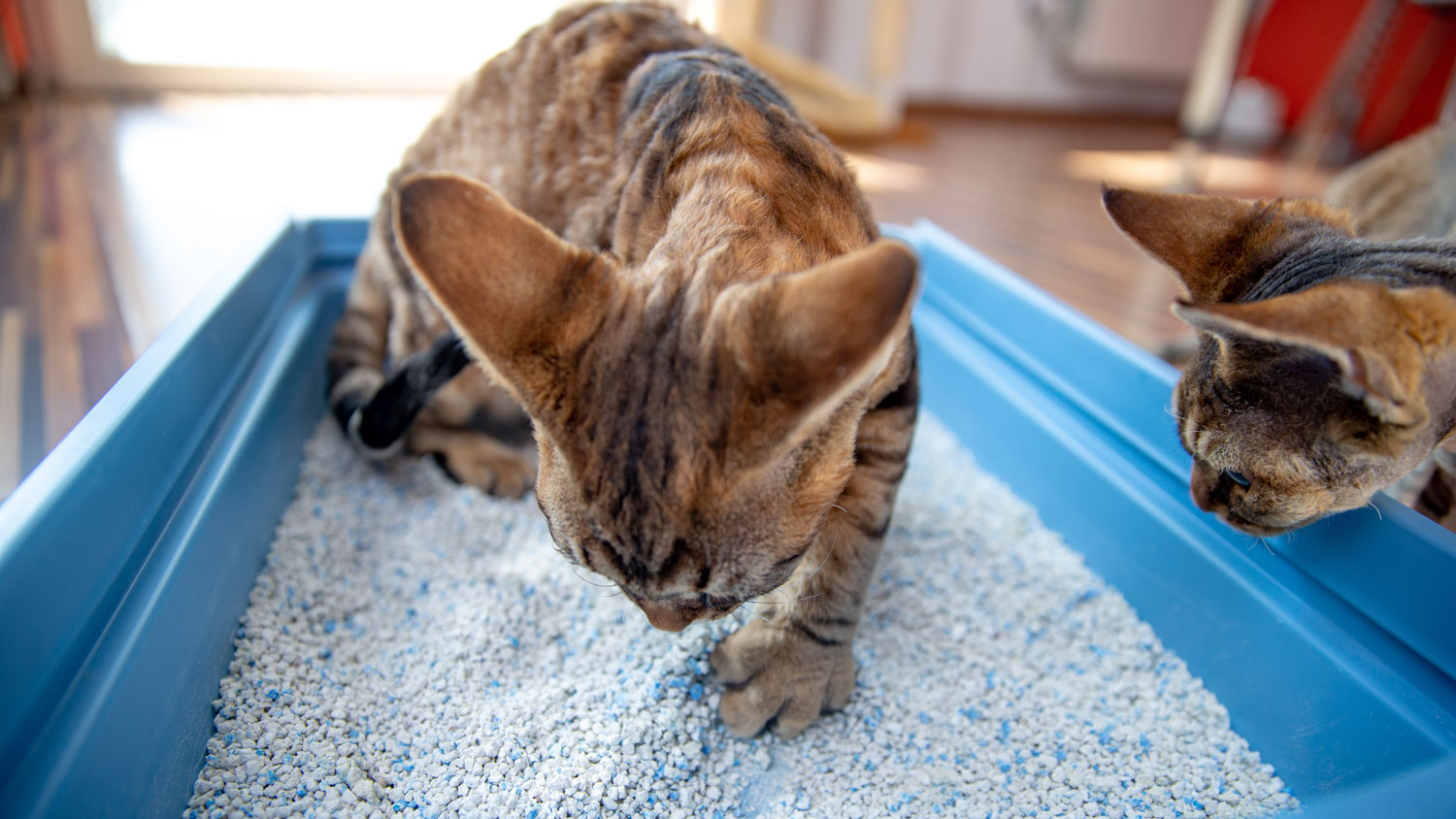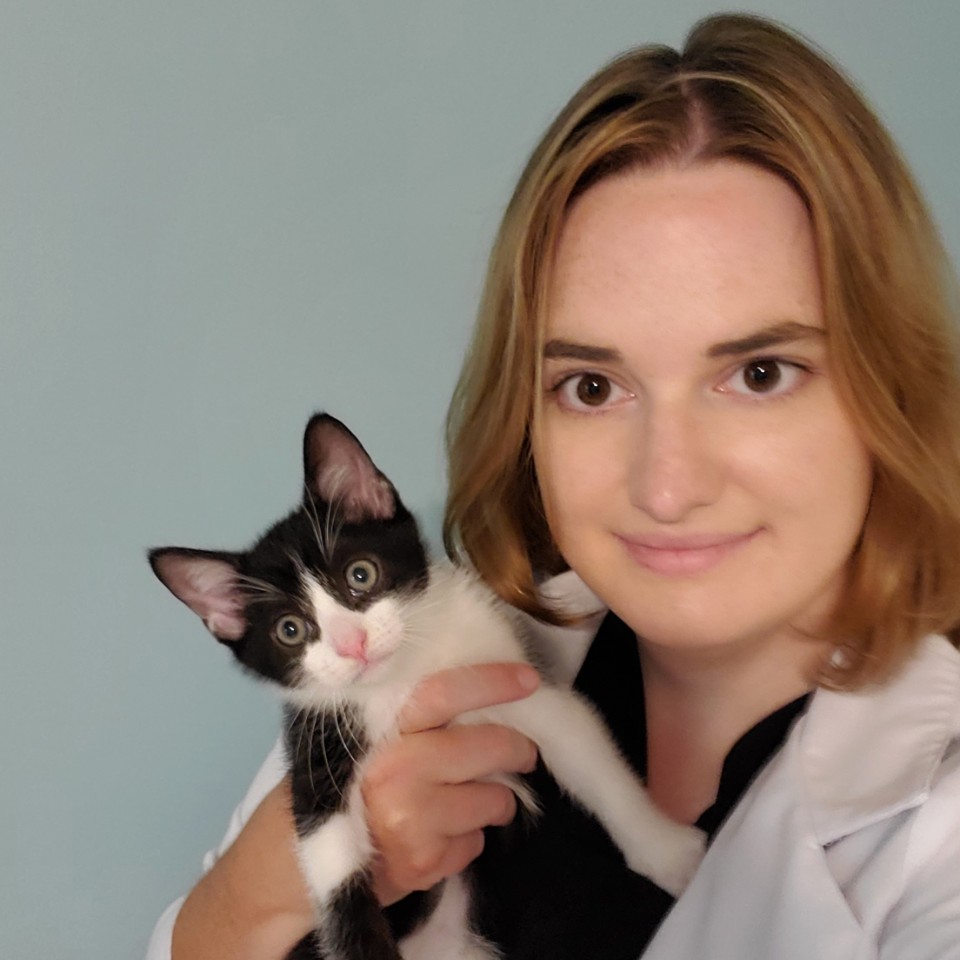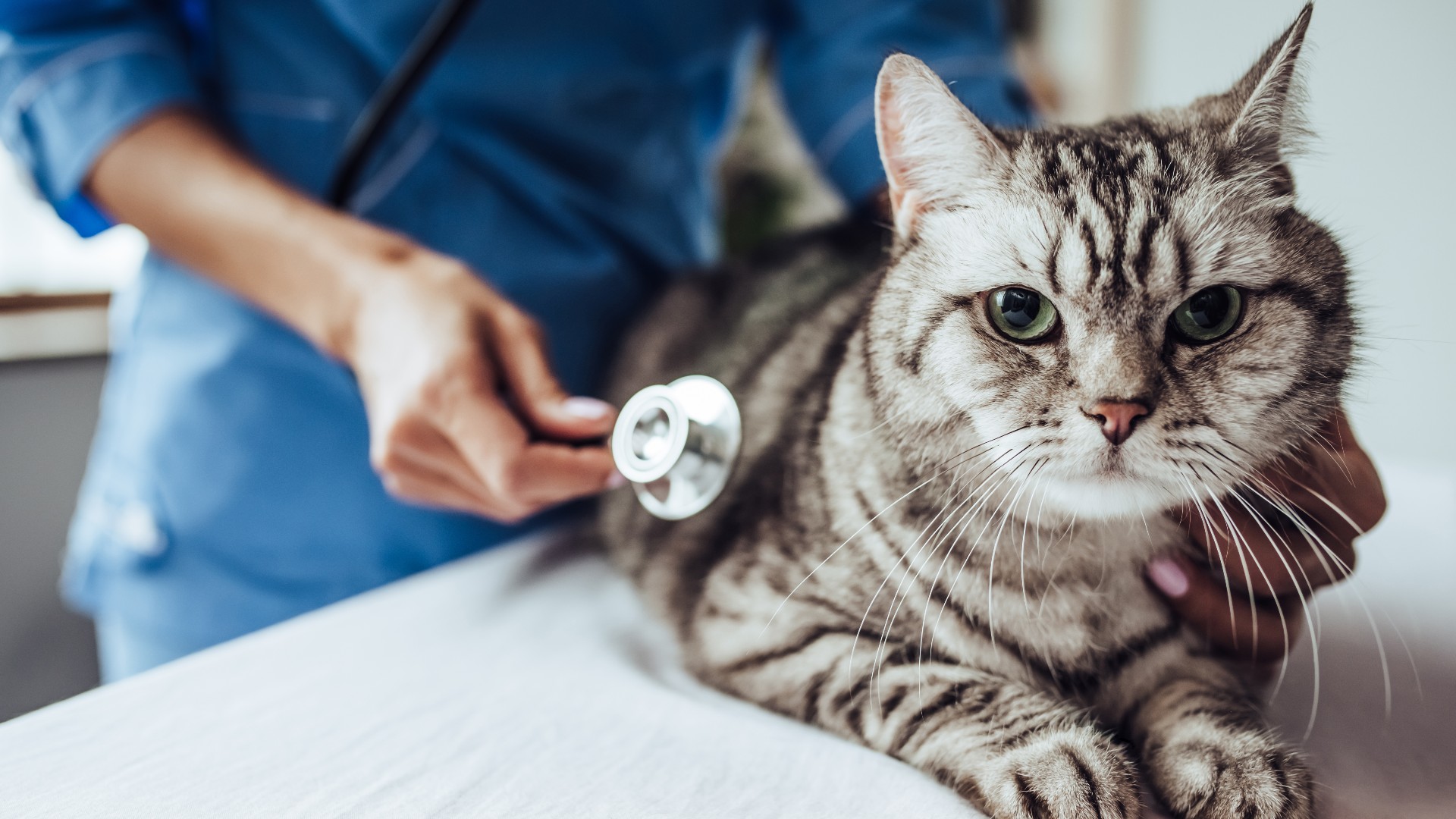Cat scooting: It is normal or a sign of a problem? A vet explains
Cat scooting isn’t just a silly behavior – it can be a sign of a problem

Cat scooting is not just bad for your carpets – it’s also a sign that your cat is uncomfortable. Cat scooting can be caused by several different conditions, but the most common cause is a problem with your cat’s anal glands.
It's possible you may even notice additional symptoms including licking the anal area, redness or irritation, diarrhea, discomfort, or changes in litter box habits.
To address cat scooting, it’s best to see your veterinarian for an examination to get to the bottom – no pun intended – of the problem. The good news is that cat scooting is often easily treatable once the underlying cause is identified, and treating the cause of the problem often resolves the scooting issue.
Read on to learn all you need to know about cat scooting and what you need to do to help your cat with this embarrassing problem.
- Cat poop: Normal, constipation and diarrhea
- Best cat litter box: Get the best bathroom for your feline friend
What is cat scooting?
If you’ve ever caught your cat rubbing his backside on the carpet, almost as if he’s trying to wipe himself – you’ve witnessed an episode of cat scooting! Cats and dogs will scoot like this if they experience itching or discomfort in or around their anal region. You may also notice other signs that your cat is uncomfortable, such as licking this area frequently, redness, swelling, discharge, or a foul odor.
Sometimes an episode of scooting will only occur once, and then your cat will be fine afterwards. Other times, your cat may continue to scoot frequently or seem distressed.
If the latter is occurring, it may be time for a visit to your veterinarian to identify the cause of your cat’s scooting behavior and to start appropriate treatment for the issue.
Causes of cat scooting
One of the most common causes of cat scooting is impacted anal glands. Anal glands – more correctly called anal sacs – are tiny sacs located just inside your cat’s anus in between the internal and the external anal sphincters. These sacs contain sebaceous glands that naturally secrete fluid that is expressed from the sacs when your cat defecates.
This fluid is used as a signal to other animals to mark territory and may also be released when the animal is stressed or frightened. If the anal sacs cannot empty normally due to impaction, infection, inflammation, or a mass in the anal sac, then fluid builds up in the sac causing discomfort which can lead to scooting.
Cats may also scoot if their anal area is irritated due to other causes, such as itching due to allergies, dermatitis, or parasites. Inflammation and discomfort can also occur due to diarrhea, cat constipation, matted hair around the anus, or other medical conditions, so it’s important to see your veterinarian for an exam if your cat is scooting frequently.

When to see a vet for cat scooting
Sometimes you’ll catch your cat scooting once and then never see it happen again. If your cat is otherwise healthy and has no other symptoms, then this is probably nothing to worry about.
But if your cat is scooting frequently or has other symptoms such as licking the anal area, redness or irritation, diarrhea, discomfort, changes in litter box habits, or other changes in health or behavior, then it’s best to see your veterinarian for an examination to determine the underlying cause of your cat’s scooting behavior.
Your veterinarian will likely ask you some questions about your cat’s behavior, such as when it began and how often it occurs. He or she will then perform a full physical examination and may recommend some additional testing such as analysis of a fecal sample or blood work to help determine the underlying cause of your cat’s scooting behavior.
Your vet will also be able to prescribe appropriate treatment to help relieve your cat’s discomfort and help stop the scooting.

Dr. Elizabeth Racine is a small animal general practice veterinarian covering all things pet health and wellness.
How to treat cat scooting
Because scooting behavior is most often caused by a problem with the anal glands, one of the first things your veterinarian will do is perform a rectal examination to check the anal glands and express the fluid from them. If the anal glands are full, expressing this foul smelling fluid is often enough to relieve your cat’s discomfort and resolve the scooting problem.
Some cats simply need their anal glands expressed once and then they are good to go and never have another issue. Other cats may need to have their anal glands expressed on a regular basis to prevent issues. Your vet will likely recommend that you monitor your cat for any recurrence of the scooting behavior and come in for another anal gland expression if this occurs.
If your cat suffers from chronic anal gland infections or inflammation, or if an anal gland tumor is the source of your cat’s discomfort, the anal glands can be surgically removed in a procedure called an anal sacculectomy. Your veterinarian will let you know if this procedure is necessary for your cat’s health.
If your cat’s discomfort is due to other underlying causes, such as diarrhea, allergies, or parasites, then your veterinarian will prescribe appropriate treatment to address these issues. In these cases, treating the underlying cause of the discomfort will resolve your cat’s scooting behavior.

Home remedies for cat scooting
Although there are many home remedies on the internet for cat scooting, most of these treatments are ineffective because they do not address the underlying cause of the scooting behavior.
If your cat is scooting frequently, it’s best to see your veterinarian to have the problem addressed directly. In general, you should never try any home remedies or over the counter treatments without first consulting your veterinarian for advice.
One home remedy that is commonly recommended for cat scooting is adding canned pumpkin to your cat’s diet. The theory is that by adding fiber to your cat’s food, you will “bulk up” the stool and increase the likelihood of the anal glands being expressed when your cat defecates.
While this home remedy is unlikely to work, it is also unlikely to harm your cat. However, if you do decide to try this remedy, make sure you are using PLAIN canned pumpkin, NOT pumpkin pie filling which contains sweeteners and spices that may be harmful to your cat.
Summary
While cat scooting may seem innocuous, it’s a sign that your cat is uncomfortable and needs veterinary attention. Fortunately, most scooting behavior can be resolved relatively easily, but sometimes scooting is a sign of a more serious issue.
Your veterinarian will help you determine the best treatment course for your cat’s scooting, so your cat and your carpets can get back to normal!
PetsRadar Newsletter
Get the best advice, tips and top tech for your beloved Pets
Dr. Elizabeth Racine is a small animal general practice vet covering all things pet health and wellness. Her special interests include veterinary behavior, nutrition, and internal medicine.
As a freelance writer, Dr. Racine has written content for major companies in the industry such as the American Kennel Club, Merck Animal Health, Bayer PetBasics, Elanco, and CareCredit. In her free time, Dr. Racine enjoys playing trampoline dodgeball, hiking with her beagle Dasher, and spending time with her three mischievous cats.
